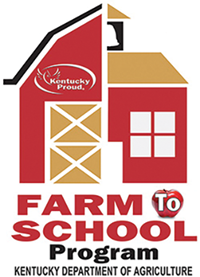$1 billion in federal cuts to programs that connect farmers, schools and food banks puts programs at risk

By Ella Denton
Kentucky Health News
Throughout the years, farmers have produced crops that feed the nation. But just five minutes away from these farms, families are going to bed hungry. To combat this problem, programs have been created to bridge this gap, but cuts to those programs put them at risk.
In March, the United States Department of Agriculture announced that it was making $1 billion in cuts to two programs that allow schools and food banks to buy food from local farms, programs meant to ease food insecurity.
In Kentucky, that amounts to $11 million from the Local Food Purchase Assistance Program, which will be out of money come August, and $3.2 million from the Local Foods for Schools program, which was scheduled to run out of money in April, Beth Musgrave reported for the Lexington Herald-Leader in March.
Why does this matter?
Kentucky ranks among the top agricultural states in the country. Still, food and nutrition insecurity remain alarmingly high.
According to Feeding America, an organization that fights hunger across the nation, one in six Kentuckians faces hunger, including one in five children. This issue hits hardest in rural areas, where access to fresh food and vegetables is often limited.
“There’s a disconnect between what’s being grown around local farms and what ends up in nearby grocery stores,” said Dr. Alison Gustafson, a University of Kentucky researcher who studies food insecurity. “And that’s really a function of our food system.”
These cuts won’t just affect students — they hurt farmers, too. Many small-scale Kentucky farmers relied on these programs to sell their crops. Without them, they’re left searching for new markets, which may not come easily.
Impact on public schools
Public schools in Kentucky are losing programs that go far beyond simply filling stomachs.
“Coming back from COVID, I had a renewed love for the garden and fresh food,” said Amy Young, a guidance counselor at Second Street School in Frankfort. “I found a lot of refuge in growing food for my family and also discovered why it is important to be closer to our food.”
Young’s passion for fresh food morphed into something bigger. She decided to pitch the idea of a school Garden Club to her principal. Today, it teaches students how to grow fresh food and also provides locally grown food to students and families.
With federal cuts, programs such as the Garden Club may not be able to continue much longer.
“This is special work, meaningful work — it means so much,” Young said. “It’s about more than food. It’s about pride, connection and care.”
What’s next?
Advocates continue to urge the Kentucky Department of Agriculture to step up. And programs like Grow Kentucky and the Kentucky Hunger Initiative are trying to fill the gap. Still, these initiatives aren’t enough to make up for the loss of federal support.
Gustafson said partnerships with DoorDash and Instacart have worked to deliver healthy meal kits from Food City to participants in this program, but it would require “serious funding” to scale up such efforts.
And though the 2025 legislative session in Frankfort has ended, public health advocates continue to push for emergency funding to support local food systems. Without it, they say, countless children, families and farmers will feel the burden.
“No one farmer or state can change the food system overnight,” Gustafson said. But step by step, bill by bill, Kentucky has the chance to improve food insecurity in the state.
Ella Denton is a student at the University of Kentucky College of Public Health and a spring intern for Kentucky Health News, an independent news service of the Institute for Rural Journalism in the School of Journalism and Media at the University of Kentucky, with support from the Foundation for a Healthy Kentucky.